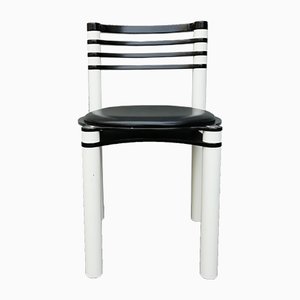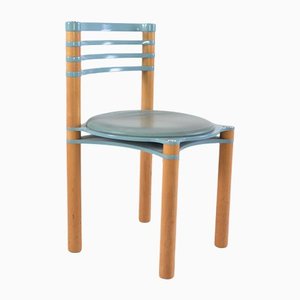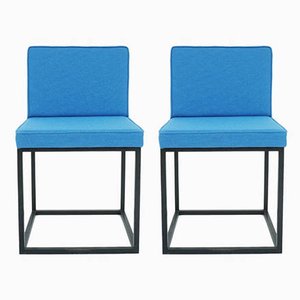
Swiss industrial and interior designer Kurt Thut (1931-2011) was born in Möriken, Switzerland to carpenter Walter Thut (1901-1976). At the age of fifteen, Thut left his small farming town and moved to Zurich to study Interior Design under the guidance of Swiss industrial design pioneer Willy Guhl (1915-2004) and Swiss architect Hans Fischli (1909-1989)—who Thut later worker for from 1958 to 1961.
While attending the Art and Design College in Zurich, Thut also completed a carpentry apprenticeship at his father’s workshop—which was originally established in 1928—and in turn introducing his father to new techniques that he had learned at school. Reluctant to leave cosmopolitan Zurich, Thut nevertheless took over his father’s business in 1976. Having already redesigned the workshop in 1958, Thut overhauled the family business and succeeded in creating a small but specialized industrial production company that exported products for the first time. He renamed the firm Thut Möbel AG, wearing many hats in his role: designer, developer, engineer, and producer.
Over the course of his career, Thut worked closely with Hans Eichenberger, Otto Glaser, Willy Glaser, Willy Guhl, Robert Haussmann, Christoph Hindermann, Verena Huber, Ublad Klug, Moritz Leuenberger, Nils Holger Moorman, Benny Mosimann, Hans Rohr, and Hanspeter Weidmann. Believing good design should be simple and straightforward above all else, Thut’s best known works stay true to his philosophy and include Series 694 Sideboard (1953), KT-221 Sofa (1956) for de Sede, and the collapsible-lattice Scissor Series—including bed No. 990 (1990), wardrobe No.440/441 (1993), and bookshelf No. 399 (2000).
In 2009, Thut Möbel won the Swiss Grand Award for design. Following Thut’s death in 2011, his sons Benjamin and Daniel ensure the continuity of Thut Möbel, designing in their father’s aesthetic.




